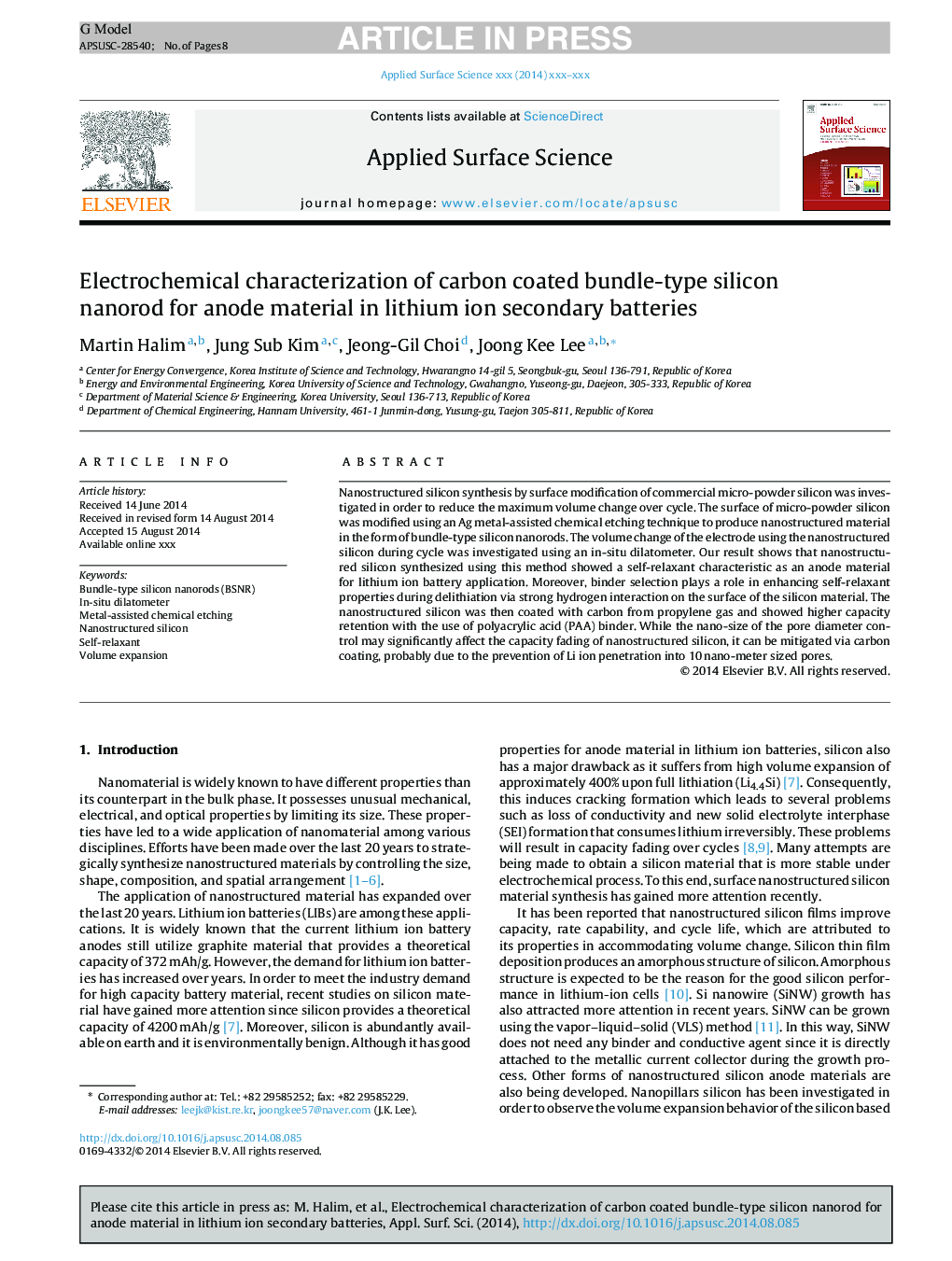| Article ID | Journal | Published Year | Pages | File Type |
|---|---|---|---|---|
| 5350386 | Applied Surface Science | 2015 | 8 Pages |
Abstract
Nanostructured silicon synthesis by surface modification of commercial micro-powder silicon was investigated in order to reduce the maximum volume change over cycle. The surface of micro-powder silicon was modified using an Ag metal-assisted chemical etching technique to produce nanostructured material in the form of bundle-type silicon nanorods. The volume change of the electrode using the nanostructured silicon during cycle was investigated using an in-situ dilatometer. Our result shows that nanostructured silicon synthesized using this method showed a self-relaxant characteristic as an anode material for lithium ion battery application. Moreover, binder selection plays a role in enhancing self-relaxant properties during delithiation via strong hydrogen interaction on the surface of the silicon material. The nanostructured silicon was then coated with carbon from propylene gas and showed higher capacity retention with the use of polyacrylic acid (PAA) binder. While the nano-size of the pore diameter control may significantly affect the capacity fading of nanostructured silicon, it can be mitigated via carbon coating, probably due to the prevention of Li ion penetration into 10Â nano-meter sized pores.
Related Topics
Physical Sciences and Engineering
Chemistry
Physical and Theoretical Chemistry
Authors
Martin Halim, Jung Sub Kim, Jeong-Gil Choi, Joong Kee Lee,
